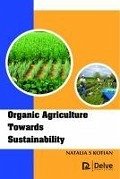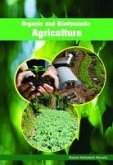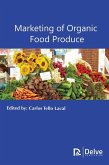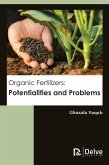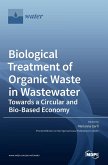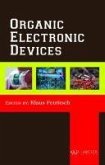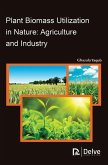Organic agriculture has gained immense popularity in recent years due to the belief that it is safer and better for the environment and human health because it is inherently free of synthetic chemicals that are often harmful. Demand for organic food touched USD 81.6 billion in 2015 according to Organic Monitor, with the USA being the largest consumer of organic food products. Organic agriculture and consequently, organically cultivated animal and plant products are an important and increasingly profitable segment among food products that are sold at a premium, higher than prices for conventionally produced food. The well-heeled, highly-educated class of consumers that views itself as socially responsible and politically engaged is the largest consumer of organic food. The purchase and consumption of food labelled as 'Organic' is slowly but steadily becoming one of the means of "inconspicuous consumption" patterns that are helping the wealthy and the "nouveau riche" to distinguish itself from the rest of the society. The term 'organic agriculture' is sometimes synonymously used with 'sustainable agriculture'. Many universities across Europe and North America, have started graduate-level degree programs to teach organic/sustainable agricultural development. The author herself holds a Master's degree in Sustainable Agriculture Development - Food security for development. Organic farming and its potential for contributing in a sustainable manner (read without causing pollution) to food production has greatly won the interest of young college students across the world and this is seen as problematic by critics of organic farming. The increasing agricultural cultivation area under organic farming is subject to criticism. Critics and sceptics have rightly pointed out that farms managed organically have lower yields than those of conventional farms, are input and labour intensive and do not always help the farmer to earn profits. Organic food has also been found to be no better than conventionally produced food in terms of nutrients or organoleptic properties. The supporters and proponents of organic farming strongly argue in favour of the environmental and health benefits offered by organic farming and organic produce. There are studies to support both sides of the argument.Many books and manuals are available in the market (either free or at a cost) to help farmers adopt organic cultivation practices. These suggestions are more or less based on the same principles and have many methods in common with conventional agriculture. However, the inputs are always of a non-synthetic nature. The organic agriculture manuals and guidebooks are always tailored to match the agro-climactic and soil conditions of the target reader audience. The manuals have systematic instructions and methods w.r.t. soil fertility management, seed/plant material procurement for cultivation, weed control, pest and disease management, organic animal husbandry and storage of harvested produce. Farmers across the globe have had a mixed bag of results trying to implement organic agricultural practices recommended for their region. This book is an attempt to honestly evaluate the practical implementation of organic farming recommendations and to see their advantages and disadvantages. The author, as an enthusiastic, young rural development worker in India, had herself tried to promote organic sugar cane production among smallholder farmers. The results were very enlightening. The most important lesson learnt was that agricultural research and subsequently extension education efforts are logistically difficult to implement and are in fact, far removed from reality. The chapter on soil fertility management considers all the possible organic options for enhancing and maintaining soil fertility. The suggestions on the use of bulky and concentrated organic manures have been studied with the point of view of actually implementing these on the farm. Green manure crops and leguminous crops have also been studied for their use in improving soil N, P and K content along with the potential advantages and disadvantages of actually including them in a crop rotation cycle. Organic farms need to supply the correct amount of macro and micronutrients to their crops for optimum growth and input-substitution i.e. the use of a proportionate amount of manures to match N, P and K supplied by chemical fertilizers, is not the correct method. Input substitution can potentially lead to ground and surface water pollution due to leaching, just like in the case of excessive synthetic fertilizer use. It can cause a serious imbalance of macronutrients in the soil as decomposition of organic manure tends to reduce certain nutrients and makes others available in concentrated amounts in the soil solution. The book also discusses the logistical and financial difficulties involved in the procurement of extremely large volumes of organic fertilizers as mandated in many organic agriculture manuals. What many individuals, including this author before attempting organic farming, often fail to take into account is that organic agriculture and conventional, industrial agriculture interdependent. Organic farms are permitted to use manures and organic wastes that originate from non-organically managed facilities. So an organic maize farm is permitted to use cow dung from a non-organically managed dairy or chicken manure from a non-organic poultry farm and hence this makes the maize farm indirectly dependent upon nutrients from synthetic sources. Organic agriculture and conventional farming are inextricably intertwined. For ensuring that organic agriculture grows in cultivation area, gains more consumers and that it is taken seriously, it should be accepted that organic and conventional farming must co-exist. The success of organic agriculture also requires the selection of seeds or planting material suited for organic cultivation practices and the chapter on seeds and planting material discusses the various options available to farmers. Most of the commercially available varieties of various crops in the market are either high-yielding, F1 hybrids or patented GMOs that are best suited to intensive chemical fertilizer usage and heavy irrigation. These varieties do not produce viable seeds that can be used in the next cropping season for sowing by the farmer. This makes farmers dependent upon corporate companies for seeds every year. It is even believed that if all GMO and high-yielding varieties were to be taken out of the market, then farmers would be left with very few viable seed options for cultivation. The use of F1 hybrids leads to the loss of useful characteristics that may be present in indigenous, traditional varieties as these are often replaced by hybrid seeds. Both traditional and contemporary hybrid varieties have their place in the agricultural production system and both should be considered and used on organic farms as per their characteristics and utility for a farmer. This also makes a wide variety of seed choices available for organic farmers. Organic agricultural production should not be hindered due to an artificial shortage of seeds despite the availability of commercial, hybrid seeds. However, organic agriculture regulations prohibit the use of GMOs and seeds treated with chemical pesticides.Weed control in agriculture, both conventional and organic, is the most important priority for farmers. It is even said that the benefit of effective weed control for crops is comparable to the addition of fertilizers to the land. Organic agriculture does not allow the use of chemical defoliants for weed control on organic farms and this leaves farmers only with mechanical and manual weed control measures. This steeply increases the requirement for human labour and machinery use. Organic farming is hence a very difficult cultivation system to adapt in countries where agriculture is not heavily mechanized. Even in industrialized countries where heavy farm machinery use for almost all agricultural tasks is the norm, elimination of herbicide use is a difficult proposition. Synthetic herbicides are applied to farms with standing crops to free them of weed growth so as to permit harvesting combines and other harvesting machines to pass unhindered through the crop for harvesting. The chapter discusses the various options available for weed control on a farm and the advantages and disadvantages associated with their use. Organic farming is highly labour intensive and the availability of labour for carrying out weeding work and the ability to bear the extra cost greatly determines a farm's ability to adapt organic management practices. Moreover, the health problems caused by manual weeding work for labourer also have the potential to cancel out all benefits accrued through the elimination of synthetic chemical usage on farms. As herbicide usage is prohibited on organic farms, so is the use of pesticides for the control of pests. Consumers turn to organic food because it has negligible or no pesticide residues whereas many farmers opt for organic agriculture because conventional, industrial farming ruins natural resources on and near the farm. The chapter on "Biological control of insects and pests" discusses the various non-chemical options available for farmers for pest control and how the natural enemies of pests can be deployed against pests, under certain circumstances, for keeping pest populations below the threshold of economic damage. This is far easier said than done because biological control mechanisms are a slow process and take many years to establish themselves. Moreover, biological control agents such as entomopathogens and beneficial bacteria are often difficult to procure, store, transport and deploy on a farm. They also need to be protected against chemical treatments that may be carried out on neighbouring farms. Another risk that exists with the prolonged use of bioagents is the threat that they themselves might become harmful for non-target species and might even start feeding upon crop species. There have been recorded instances where insects introduced against weeds started feeding on the main crop itself. A farmer needs to take into consideration various permutations and combinations before choosing and using various bioagents on his field. However, the threat from bio agents is not as dangerous as that from the excessive and unregulated use of pesticides. Apart from plant-origin products, the customer today has also grown increasingly conscious of the quality of livestock products and the conditions under which they are manufactured owing to the various scandals involving adulteration of milk, meat and eggs with harmful synthetic substances (deliberate or otherwise) and bacterial contamination due to unhygienic production practices. People are also concerned about antibiotic overuse for rearing animals and the subsequent development of antibiotic resistance among pathogenic bacteria rendering many known drugs ineffective for treatment. There have been reports from various countries about traces of several pesticides, insecticides, drugs and hormones being detected in animal-origin products that could prove harmful to human health to the extent of being carcinogenic. The stated concerns have prompted an increase in the number of livestock farmers shifting to organic production, both for quality concerns and to earn better premium on organic milk, meat and eggs. The chapter on organic livestock farming discusses various organic livestock and poultry farming management systems and covers issues related to health management, record keeping, breeding strategies, cost of production and input and the various problems encountered in organic breeding of livestock. Finally, any business works for profit. Organic farms are no different. For organic farming to be successful, the organic products need to be certified and marketed correctly at the optimum price point for the farmer to be able to recover his costs and to earn a decent profit. The final consumer must also be assured of actually receiving what he/she has paid a higher premium for i.e. truly organically produced goods. The prices for organic food are often very high as compared to conventionally produced food and this is expected to change once the supply of organically produced food increases and balances out the market. The market for organic food is growing at a rapid pace but the production of organic food can barely match this rate. To ensure sustainable growth of the organic food produce market, there is an urgent need to provide farmers with correct and practical advice for all aspects of organic farm management, to offer them assistance with record-keeping, certification, appropriate transportation and food-processing to avoid contamination of organic food with prohibited chemical substances, and marketing of organic produce.
Hinweis: Dieser Artikel kann nur an eine deutsche Lieferadresse ausgeliefert werden.
Hinweis: Dieser Artikel kann nur an eine deutsche Lieferadresse ausgeliefert werden.

